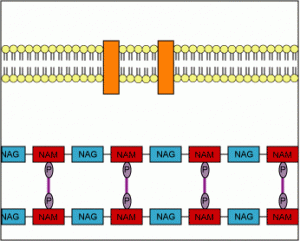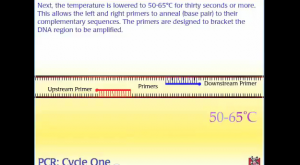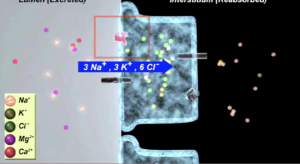DNA restriction is a technique often useful in DNA fingerprinting. DNA restriction basically implies that there is a cut or cleavage of a particular DNA molecule. DNA restriction enzymes or restriction endonucleases such as EcoRI cuts the double stranded DNA at specific restriction sites which have a particular specific nucleotide sequence. These endonucleases are generally found in bacteria and smaller microorganisms. In order to cut the double stranded DNA, the enzyme has to first, identify a restriction site on the sequence of the DNA. After this, it has to make two incisions in the DNA molecule, once on each sugar-phosphate backbone of the molecule.
Restriction enzymes are characterized into 3-4 groups. This is done on the basis of which co-factor is being used, in order to drive the restriction endonuclease, or the position of DNA cleavage it can generate on the target sequence, or on the nature of the target sequence. By using different restriction enzymes, on a specific DNA sequence, scientists can create a restriction map of the sequence, which will be unique for that DNA sequence, and hence called the DNA fingerprint. Thus the primary use of the restriction enzymes is for DNA fingerprinting. Restriction enzymes and DNA ligase are also used in DNA transformation. The animation below describes the process of how the restriction endonucleases work in order to cleave the double stranded DNA and how another enzyme, called DNA ligase, helps in putting these cleaved pieces back together.
The animation was provided by the DNA Learning Center and their YouTube Channel. “The mission of the DNA Learning Center is to prepare students and families to thrive in the gene age.”
Animation
[swfobject]1471[/swfobject]
Transcript
The discovery of enzymes that could cut and paste DNA made genetic engineering possible. Restriction enzymes, found naturally in bacteria, can be used to cut DNA fragment at specific sequences, while other enzyme, DNA ligase, can attach or rejoin DNA fragments with complimentary ends.
Restriction enzymes are sequence specific. They recognise and bind to specific DNA sequences. EcoRI for example, binds to the sequence GAATTC.
Once they bind to their recognition sequence, restriction enzymes cut the sugar-phosphate backbones of the DNA strands. EcoRI is a restriction enzyme that cuts unevenly, leaving overhangs or “sticky ends.”
The sticky ends can be reattached by another enzyme called ligase. It catalyzes the chemical reaction that rejoins the DNA sugar-phosphate bonds.



